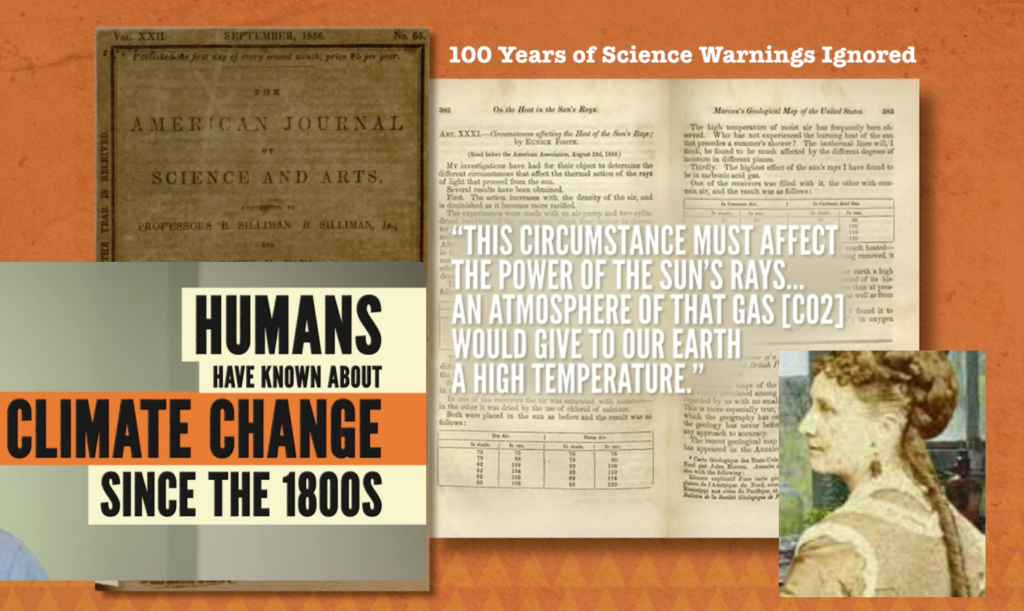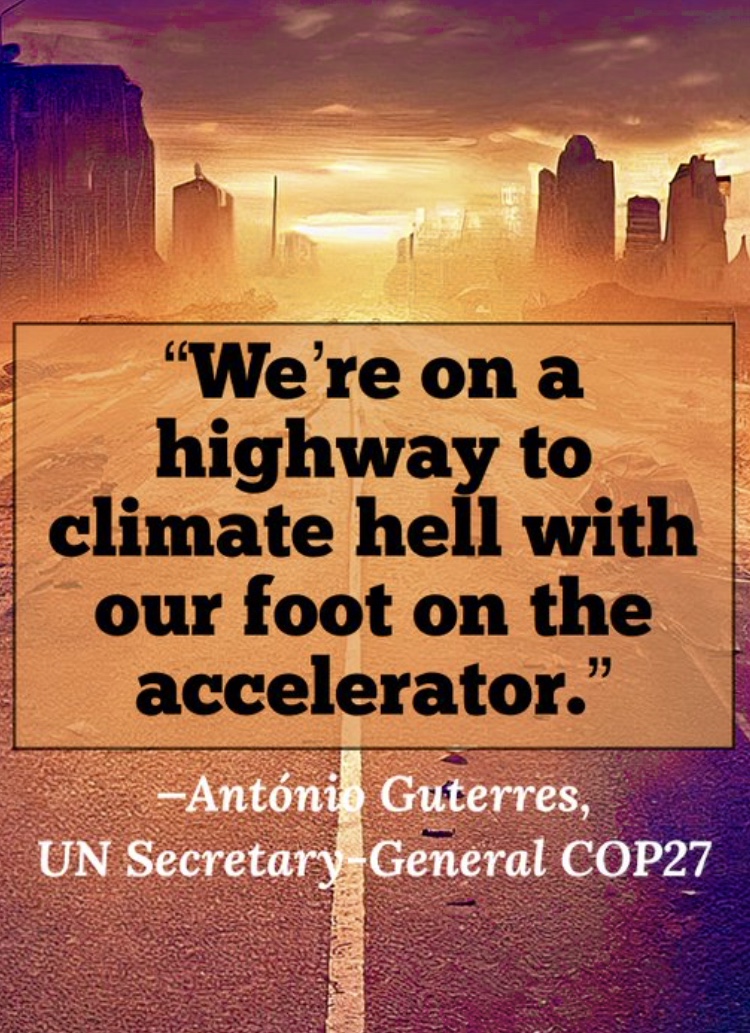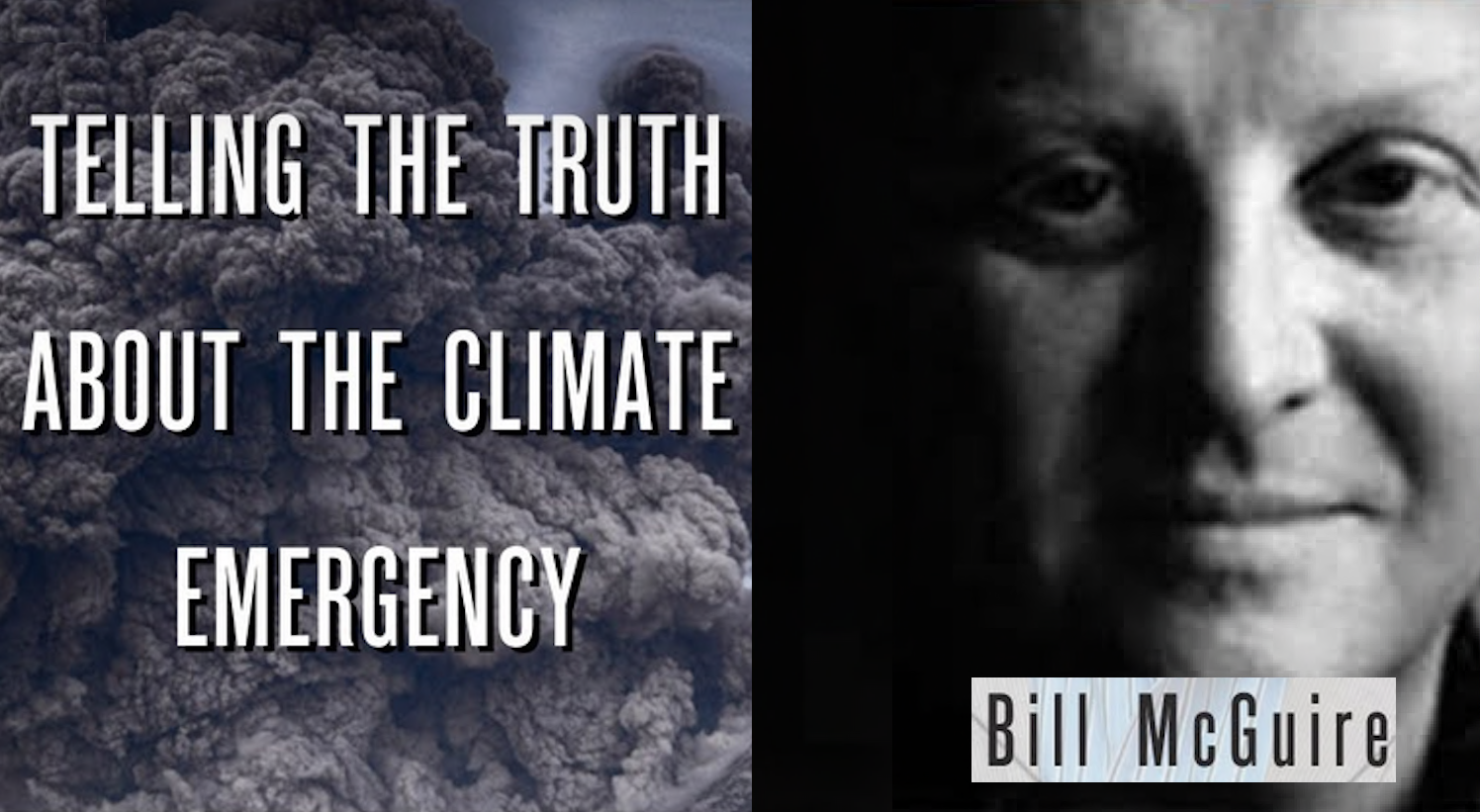
Many scientists and researchers have pointed out that what we call climate change is really a complex interrelated set of phenomena that may result in ecological disaster, biodiversity loss, biosphere destruction, civilizational collapse, mass extinction, and beyond. Climate change is already causing significant and potentially irreversible effects to our planetary systems, including rising temperatures, sea level rise, floods, fires, more frequent and severe extreme weather events, species loss, and much more. These changes are expected to continue and worsen in the coming years and decades, which will lead to increasing social and economic impacts, particularly in vulnerable communities.
It is well-known that scientists have reached a near 100% consensus on human-induced climate change. There is no question that there is a prevailing and urgent need to take action on this issue to protect the health and well-being of the planet and future generations. Many scientists have been issuing resounding warnings for decades. Even more upsetting, 88% of science researchers expect climate change to unleash catastrophic impacts in their lifetimes. They have also begun to admit openly to feeling terrified and/or scared about the future. Well-known climate scientist, Katharine Hayhoe, has said “I’m a scientist, and what I see happening scares ME.” NASA Climate Scientist, Peter Kalmus, has stated in a series of disturbing Tweets that ‘if the scientists are terrified, we should be too.’
However, according to the history and timeline, for at least 60 years the scientific warnings on climate change have been repeatedly and routinely ignored. If we go back even further, we can see that the first scientific warnings about the dangers of greenhouse gasses date back more than 100 years. Johann Wolfgang von Goethe was a German writer, statesman, poet, philosopher, and scientist. In 1832, he wrote:
“Man in his misguidance has powerfully interfered with nature. He has devastated the forests, and thereby even changed the atmospheric conditions and climate. Some species of plants and animals have become entirely extinct through man, although they were essential in the economy of Nature. Everywhere the purity of the air is affected by smoke and the like, and the rivers are defiled. These and other things are serious encroachments upon Nature, which men nowadays entirely overlook but which are of the greatest importance, and at once show their evil effect not only upon plants but upon his animals as well, the latter not having the endurance and power of resistance of man”.
In 1856, according to JSTOR Daily, Eunice Newton Foote became the first scientist to chart climate change physics and separately demonstrated that carbon dioxide and water vapor trapped heat and suggested that it could do the same in the atmosphere; though this history was largely suppressed until very recently. In 1896, a seminal paper by Swedish scientist Svante Arrhenius, a very distant relative of Greta Thunberg, first predicted that changes in atmospheric carbon dioxide levels could substantially alter the surface temperature through the greenhouse effect.
In recent decades, there are many notable and historic instances of eminent climate scientists such as Carl Sagan (1985), James Hansen (1988), and Michael E. Mann (2017, 2019) testifying before Congress in the US. In 1992, Henry W. Kendall and thousands of signatories issued the first Scientists’ Warning to Humanity on behalf of the Union of Concerned Scientists (UCS). It was followed by even more warnings in recent years including the 2019 warning on climate change led by William J. Ripple and subsequent updates in 2021 and 2022.
In fact, scientists from all around the world have been sounding the alarm significantly  in the last decade. They include eminent scientists like H.J. Schellnhuber, Johan Rockstrom, the late Will Steffen, Timothy Lenton, Bill McGuire, J.K. Steinberger, and many more. The IPCC issued a Code Red for Humanity in 2021. UN Secretary-General António Guterres has pleaded with world leaders to course correct many times now.
in the last decade. They include eminent scientists like H.J. Schellnhuber, Johan Rockstrom, the late Will Steffen, Timothy Lenton, Bill McGuire, J.K. Steinberger, and many more. The IPCC issued a Code Red for Humanity in 2021. UN Secretary-General António Guterres has pleaded with world leaders to course correct many times now.
However, despite this ongoing century of warnings, very little has been done to actually cut emissions or to begin to drawdown CO2 in any significant way. In fact, CO2 emissions recently reached another milestone in April 2023 hitting 424 ppm. We have reached levels not seen in 4 million years. To date, the current US President, Joe Biden, has failed to declare a large-scale climate emergency, while profits soar for oil companies under the current administration. Now, why does that sound wrong?
This very brief history brings us to the current years, in which the warnings have become constant. In the last couple of years especially, we have begun to see headlines beginning with the words “scientists warn” issued in reports regularly. Yet, as a global society, our elite world leaders and the majority of their constituencies continue to be stultifyingly slow to respond in any serious way to this critical hyperthreat. As military strategist Liz Boulton and others have said, climate change is not just a threat multiplier, it is the main threat. Instead, emissions continue to go up disastrously, while the warnings are ignored and the profit margins of just a few of the wealthiest people on the planet increase. At this point, it is hard not to ask if these critical warnings have become nothing more than attention-grabbing headlines.
Why are the Scientists’ Warnings being ignored?
Researchers have been asking this question for a long time. The reasons why these many historic scientific warnings on climate change and its causes are ignored are complex and varied. Possible contributors to this state of affairs include just some of the following factors identified by analysts and scholars:
- Profit motives and economic interests. In disaster capitalist enterprises and predatory global neoliberal political-economic frameworks, companies as well as individuals that serve them, can profit more from the disaster itself than from avoiding it. Some have argued that in the West, we have a conflict and war-based economy which thrives on predatory behaviors. In short, industries are resistant to accepting scientific warnings about climate change because they think that it threatens their profits or livelihoods. This also causes them to downplay the risks or actively fight against policies aimed at mitigating climate change.
- Billionaires and other wealth hoarders. Professor Bill McGuire, Scientists’ Warning Scientific Advisory Board Member, said recently, “…any political-economic system that allows billionaires to exist is dysfunctional and works against the common good.” The Scientists’ Warning on Affluence further discusses this problem.
- Bureaucratic obstacles. Neoliberal infrastructure is informed by ideological frameworks that rely upon a winner-take-all profit motive that incentivizes lack of action on every level. This essentially means any wealth creation never actually trickles down while red tape, polarized partisan politics and stonewalling tactics prevail.
- Ideological beliefs. Climate change has become a highly politicized issue in some parts of the world, with some individuals and groups holding strong beliefs that are at odds with the scientific consensus. These are often components of fundamental religious ideas that have existed for centuries without change. These ideologies have become an impediment to the acceptance the evidence and warnings about climate change around the world. These ideologies act as a form of collective coercive control that removes individual agency and masquerades as a free choice. But coercion is not choice, it is actually form of abuse of power in what Mark Fisher called capitalist realism. David Graeber and other theorists have also discussed this. However, traditional wisdom from indigenous leaders can really help us put this into perspective as the following sentences paraphrased from Sherri Mitchell, Weh’na Ha’mu Kwasset, a Native American lawyer, author of Sacred Wisdom, teacher and activist demonstrates the illusion of mind that is plaguing our world:
‘In the last 100 years, we have caused as much destruction to this planet as has been caused in the entire existence of human beings on this planet. This is because we think that it is idealistic to be misaligned with the status quo, but it’s realistic to be aligned with the destruction of life. So this is the problem we are all facing right now. We are misaligned with life. It’s madness. And so what we are dealing with within this system is a serious spiritual and psychological illness that has been embedded into our common system. We are to the point where we can no longer continue to sustain life on Mother Earth if we don’t stop …’ [Paraphrased]
- Disinformation, denial and misinformation. There have been deliberate dark money funded efforts by known entities like Koch Industries, the Heartland Institute, The Competitive Enterprise Institute, The McClellan Institute, Praeger, The Heritage Foundation, American Enterprise Institute, The Creative Society and others. Large financial houses like Black Rock, Goldman Sachs, The Mercer Family, The Biden Crime Family Syndicate, The Crown Territories, Vanguard and so on have huge investments in the fossil fuel, nuclear weapons and arms industries. The people are pawns for profit in these ‘war games‘ and the only winning move, just like the AI learning machine said in the movie by the same name, is “not to play.” Desmog Blog lists many more nefarious entities who have worked hard to sow doubt and confusion about climate change for decades. The book Discourses of Climate Delay goes into this in depth.
- Interdependencies overlooked. When people and organizations look at climate change they tend to just look at what happens in the world like extreme weather, higher temperatures, melting ice sheets, rising seas, and plant and animal extinctions. But they don’t typically factor in how these changes reverberate in human societies and interact with existing problems — like war, hunger, and disease.
- Psychological factors. Some suggestion has been made that individuals may be prone to ignoring or denying threats that are perceived as distant or abstract, which also contributes to the tendency to ignore warnings about climate change often discussed in reports as beginning in 2050 or 2100. However, more recent research suggests that not only is climate change already impacting us now faster than scientists thought, but also that psychologists interested in climate action should expand their scope beyond individual behaviors to include psychological questions that challenge existing power relations and raise the possibility of transformative social change, a much understudied aspect.
- Psychological reactance and trauma. This means that when individual freedoms are reduced or threatened with reduction, people tend to be motivated to regain those freedoms even through distraction and delusion especially if they are already traumatized. In other words they enter reactive states. We see this in a society that relies on distraction and addiction to function to the extent of a mass psychosis of cognitive dissonance that has been discussed by many critical theorists such as Gabor Mate.
- Scientific reticence. Eminent climate scientist, James Hansen identified this among his colleagues. He discusses this at length in this video for ScientistsWarning.TV. He explains that ‘the reticence arises from political pressure, institutional conservatism, so-called ‘objectivity’, aversion to controversy, etc. But when the data and the conclusions it leads to are alarming, isn’t it imperative that the alarm be transmitted publicly? Here is another facet of society’s apparent inability to assess and respond appropriately to the present immense, existential threat of climate change.’
- Failure to consider worst-case scenarios. According to Climate Scientist, Timothy Lenton, there is “not enough emphasis on how things, the risks, the big risks, could go plausibly badly wrong.” According to one of the studies he co-authored on this topic title The Future of the Human Niche, at 2C of global warming there will be as many as 1000 million refugees. This is an estimate, but it is in the math. These numbers in the scientific models are meant to warn global society, but most people do not even understand how this math is derived. The paper further states:
“Populations will not simply track the shifting climate, as adaptation in situ may address some of the challenges, and many other factors affect decisions to migrate. Nevertheless, in the absence of migration, one third of the global population is projected to experience a MAT >29 °C currently found in only 0.8% of the Earth’s land surface… As the potentially most affected regions are among the poorest in the world, where adaptive capacity is low, enhancing human development in those areas should be a priority alongside climate mitigation.”
- Monitoring and modeling shortcomings. There are many known errors and holes in the data as well as items missing from the climate science modeling to date. Notably the IPCC’s budget calculations aren’t factoring in a major source of emissions—permafrost thaw. This is just one example. There are many more. This kind of modeling discrepancy can be used by exacerbate the already endless debate by experts on this matter, which is then further exploited by merchants of doubt.
- The what, i.e. information, must be used. However, the how, introduces fathomless complexity that our current society is not well-equipped to manage which has led to stagnation, avoidance, and just plain oversight in many sectors.
- Complexity and lack of understanding. Climate change is a complex and multifaceted issue, and some people may not fully understand the science behind it or the potential impacts it could have. This makes it easier for them to ignore and dismiss the warnings. Systems thinking, complexity theory, and critical thinking skills are rarely taught in classrooms today. People lack the education and skills to analyze this issue which makes them easy targets for sociopathic disinformation and denial campaigns.
- Warnings were simply never enough by themselves. It is well-known that people do not typically act based on facts alone, but rather on a complex mix of information and emotions. Either/or missus the point. Science communicators are needed to connect the dots and provide meaningful narratives that people can understand, relate to and make actionable.
How do we overcome centuries of entrenched inaction?
First, it must be said, that if this sounds more than daunting, that is because it is. As a reminder, this is why many theorists have referred to climate change as the greatest challenge that humans will ever face. Overcoming the barriers to accepting and acting on the scientific warnings about climate change will require global engagement, cooperation, collaboration, and innovation from all stakeholders, national and international, bridging all imaginable geopolitical boundaries on a scale that has never happened before in the history of modern man.
To mitigate the worst impacts of climate change as well as prevent collapse and mass extinction, it will be necessary for individuals, governments, and organizations to take immediate and drastic action to reduce greenhouse gas emissions, transition to clean and renewable energy, and develop better systems and governing frameworks. This will include working toward transitioning to an ecological civilization and an ecological economy based not on growth, but rather degrowth — a concept which is still foreign to most people. This is because it is pretty much the opposite of everything we have been doing so far as the ‘victims of progress‘ (as discussed by John Bodley, Jared Diamond and others).
We have been serving an endless growth paradigm that is informed by extractivist colonializing forces that have never fully ended even in the modern era. But now our tendencies toward violence, oppression, and war combined with our inability to cooperate could mean extinction for our species.
Overcoming these complex challenges will require a multifaceted and coordinated approach. Possible strategies that could be used to help overcome the barriers to finally taking action on the scientific warnings about climate change will require just some of the following strategies.
- Educating the public and increased science communication. Providing accurate and accessible information about the science of climate change, its impacts, and potential solutions is key to helping individuals understand the importance of addressing this issue.
- Engaging with diverse stakeholders. Climate change affects different groups of people and regions in different ways, and it’s important to engage with a wide range of stakeholders to understand their perspectives, needs, and priorities.
- Addressing economic and social inequality. Addressing inequality, poverty, and social justice issues could help build support for climate action and ensure that the costs and benefits of addressing climate change are equitably distributed.
- Fostering collaboration and cooperation. Addressing climate change requires a coordinated effort across multiple sectors, including government, business, and civil society. Encouraging collaboration and cooperation, sometimes called mutualism, between these sectors can help build momentum for change. For the future we want, we will need a society based on cooperation, not oversimplified and sociopathic notions of competition (and even Darwin has been abused on this account) as it has been so far.
- Countering disinformation. Addressing disinformation in the ongoing misinformation crisis will be necessary in order to build a more informed public that is better equipped to understand and act on this issue. But this is no simple task. Some of the most powerful and wealthiest of elite shadow entities and world leaders are still funding this and the corruption that it begets. Halting the horror show of denial is a wicked problem as ridiculously hard as solving the climate crisis itself.
- Promoting innovation with nature-based solutions. Developing and promoting new nature-based and biophilic technologies, policies, and approaches to addressing climate change can help build momentum for change and create new opportunities for sustainable growth and development. This means saying no to climate denialism and eco-fascist doomism. It also means avoiding geoengineering scams like the MEER project, net-zero schemes, and techno-fantastical futures in space that serve only elite billionaires. There is no Planet B.
- Developing new narratives and stories. We will need stories of the future that show us how we can live well with less and that provide examples of smart cities. Paul Chatterton has done some great work on re-imagining how cities might be built. Combining literature and aesthetics, solarpunk approaches are a fun way for all ages to get inspired to take action on climate change. Other great examples of those creating new narratives in “cli-fi,” short for climate fiction, include Ministry of the Future by Kim Stanley Robinson, and Staying with the Trouble: Making Kin in the Chthulucene, and other symbiocene-related speculative fiction works.
- Civil disobedience. Civil disobedience is more than just “a public, non-violent, conscientious yet political act contrary to law usually done with the aim of bringing about a change in law or policies of government.” It is a powerful means of combating unjust laws, and freeing society from oppressive restrictions. Learn more about ‘designing the revolution‘ with social change leader, future thinker and expert Roger Hallam.
- Healing the trauma and collective schism. To be clear, the problem is not that we don’t know the science, or that we don’t understand the problem, or even that we don’t have the solutions. It is that we cannot cooperate globally to act in a meaningful way. This is largely due to a post-truth worldview of individual competition for which the horrendous collateral damage presents in terms of subconscious and hidden psychological trauma gone wrong that is so entrenched that it could kill us. We are becoming increasingly mentally ill, sociopathic, and traumatized in the current world order. Dr. Gabor Maté as well as indigenous leaders like Rev. Dr. George E. “Tink” Tinker, Sherri Mitchell, and others are discussing this problem.
So, how do we restore harmony and balance so that we can cooperate globally to heal the Earth?
 First, we have to ask this question to the people with the right answers. They are telling us in no uncertain terms that we have to move away from hierarchy and colonization. Ask Prof. Tink Tinker (Osage Nation) who discusses “Individual Salvation vs. Cosmic Balance: An American Indian Perspective.” George “Tink” Tinker (Osage Nation) is an American Indian scholar, scientist and philosopher who taught for more than three decades and has focused his scholarship on the decolonization of American Indian Peoples. In this lecture at Yale Divinity School in 2018, he talks about how the extractivist, colonialist hierarchy is creating a sick, sociopathic, unwell, and imbalanced world in which we cannot respond to climate crisis or any other crisis. He says, ‘we have created a world that is not able to work in harmony. We have created a world in which community doesn’t function and cooperation fails.’ We must learn new ways of being and new world views in order to heal.
First, we have to ask this question to the people with the right answers. They are telling us in no uncertain terms that we have to move away from hierarchy and colonization. Ask Prof. Tink Tinker (Osage Nation) who discusses “Individual Salvation vs. Cosmic Balance: An American Indian Perspective.” George “Tink” Tinker (Osage Nation) is an American Indian scholar, scientist and philosopher who taught for more than three decades and has focused his scholarship on the decolonization of American Indian Peoples. In this lecture at Yale Divinity School in 2018, he talks about how the extractivist, colonialist hierarchy is creating a sick, sociopathic, unwell, and imbalanced world in which we cannot respond to climate crisis or any other crisis. He says, ‘we have created a world that is not able to work in harmony. We have created a world in which community doesn’t function and cooperation fails.’ We must learn new ways of being and new world views in order to heal. - Establish a well-being or ecological economy. This is hardly new, people have been saying it for years. We need to move away from GDP and toward GNH (Gross National Happiness) and/or some degrowth or ecologically-based economic system. We need an ecological, regenerative, well-being and/or sharing economy (video) or some combination therein. These concepts are now emerging in public discourse. In this video, the well-being economy is explained along with the notion of gross domestic well-being. Many theorists are now discussing en ecological civilization and economy and presenting us with the road maps for how to get there. Others have begun to discuss the symbiocene and are following the solarpunk or simplicity movements along these lines. In short, simplicity theorists argue that just climate action doesn’t have to mean living in scarcity, it instead shows us how beautiful the world could be when we live with appropriate abundance.
Ultimately, addressing the challenges associated with climate change will require an ongoing, coordinated, and sustained effort across multiple fronts like we have never seen before using systems thinking, advanced science synthesis, super-computing, and AI technologies to implement nature-based solutions, and critical theory to account for the challenges inherent in wicked complexity.
By taking a multifaceted approach that includes science, technology, science communication, education, engagement, collaboration, and innovation, it may be possible to overcome some of the barriers to accepting warnings about climate change and to finally take action to build a livable socioeconomic framework that would allow us to avoid collapse, the ‘death project,’ and the daunting math of climate change which predicts 1000M refugees if we fail to act. But failure is not an option.
_____________________________________
~For All Life on Earth~
Author: Scientists’ Warning Foundation, Science Communicator Shani Cairns
Date: May 7, 2023



